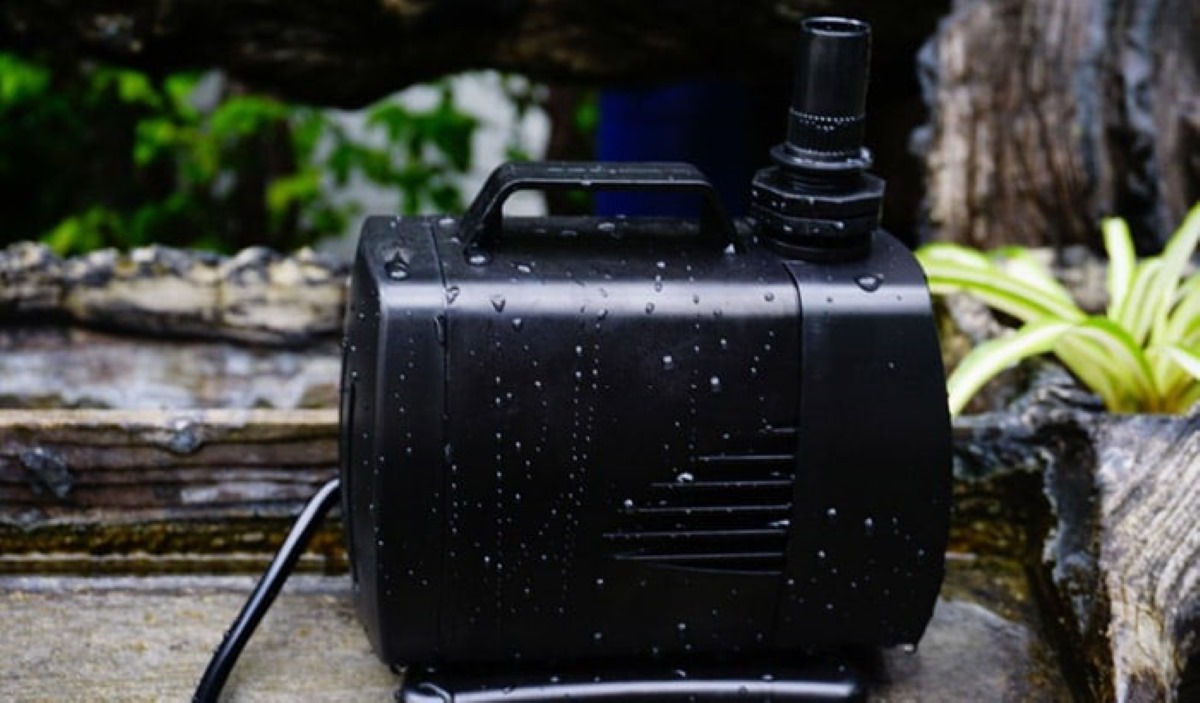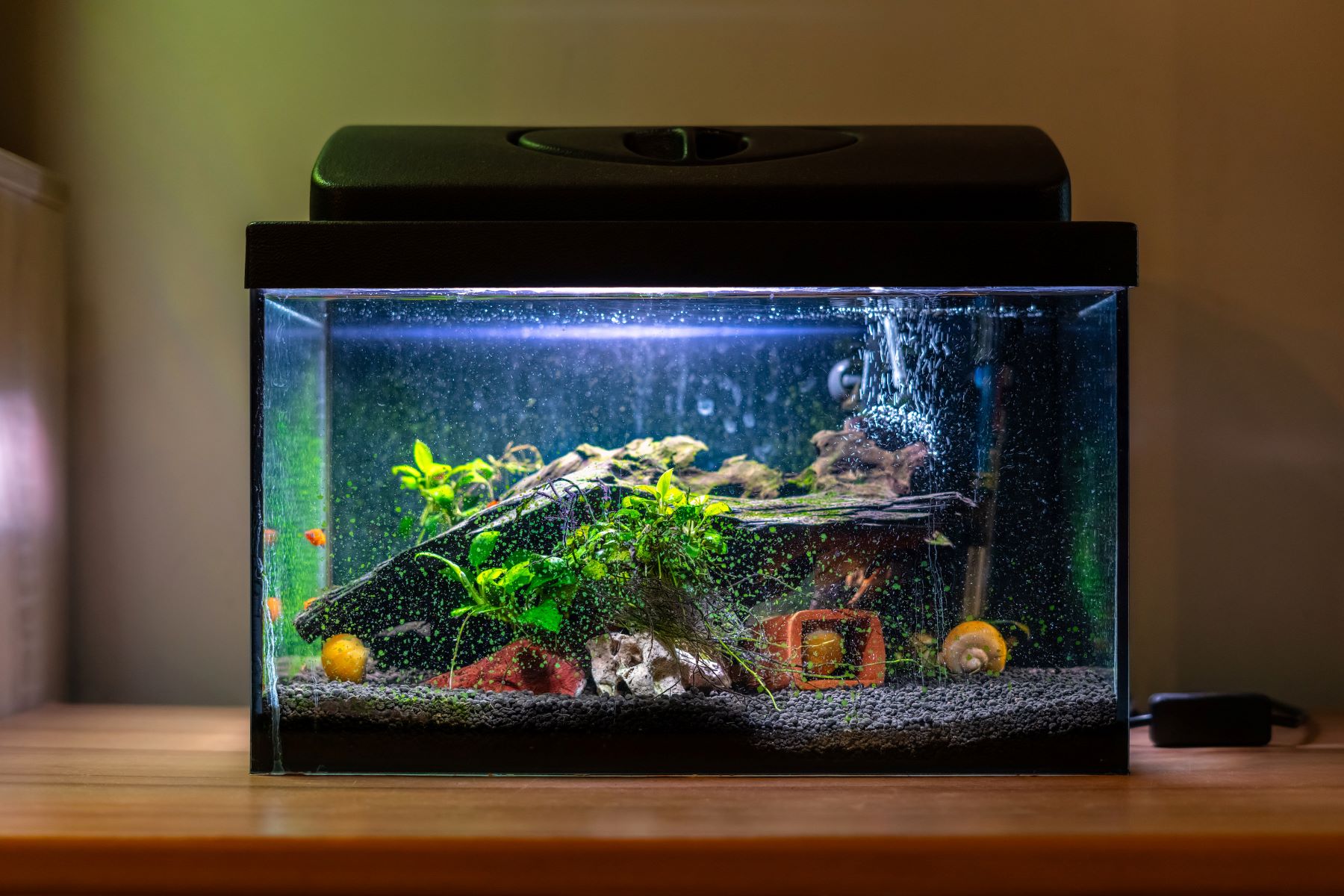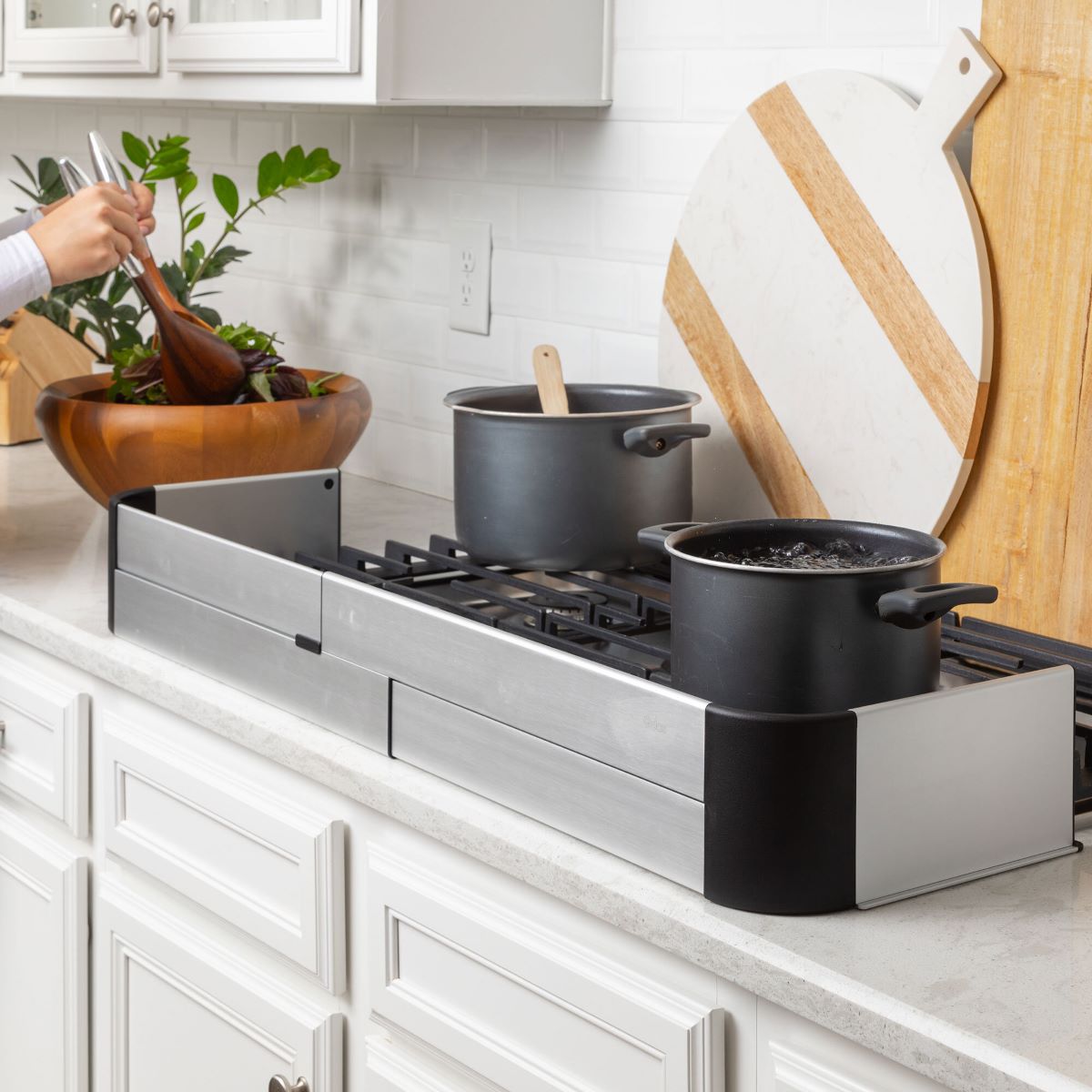Home>Maintenance & Safety>Safety Equipment & Products>How To Childproof A Fish Tank


Safety Equipment & Products
How To Childproof A Fish Tank
Modified: February 25, 2024
Learn how to childproof your fish tank with the right safety equipment and products. Keep your children and pets safe around your aquarium.
(Many of the links in this article redirect to a specific reviewed product. Your purchase of these products through affiliate links helps to generate commission for Storables.com, at no extra cost. Learn more)
Introduction
Read more: How To Clean Fish Tank Glass
Introduction
Welcome to the wonderful world of fishkeeping! Whether you’re a seasoned aquarist or a newcomer to the hobby, creating a safe environment for your aquatic pets is of utmost importance. When children are part of the household, ensuring the safety of both the little ones and the finned friends becomes even more crucial. Childproofing a fish tank involves a combination of thoughtful planning, careful consideration, and proactive measures to prevent accidents and keep everyone happy and healthy.
In this guide, we’ll explore the essential steps to childproofing a fish tank, from assessing potential risks to selecting the right tank and decorations, and maintaining safety measures. By implementing these strategies, you can enjoy the beauty of a thriving aquarium while providing a secure environment for your children and pets.
Assessing the Risks
Key Takeaways:
- Childproofing a fish tank involves choosing a sturdy tank, securing it from tipping, and using safe decorations to keep both kids and fish safe and happy.
- Regular maintenance, educating children about the tank’s ecosystem, and establishing safety protocols are essential for creating a secure and nurturing environment for both kids and aquatic pets.
Assessing the Risks
Before embarking on the childproofing journey, it’s crucial to assess the potential risks associated with a fish tank in a household with children. Understanding these risks will help you develop a comprehensive safety plan tailored to your specific circumstances.
One of the primary risks is the possibility of a child accessing the tank and its contents unsupervised. This can lead to various hazards, including the ingestion of fish food or water, physical injury from sharp tank edges or equipment, and the introduction of foreign objects into the tank. Additionally, the chemicals used to maintain water quality, such as dechlorinators and fish medications, pose a poisoning risk if handled improperly.
Another consideration is the stability of the tank itself. Children are naturally curious and may attempt to climb or lean on the tank, potentially causing it to topple over. This can result in water spillage, broken glass, and harm to both the child and the aquatic inhabitants.
Furthermore, electrical components, such as heaters, filters, and lighting fixtures, present a risk of electric shock if tampered with. It’s essential to identify and address these potential dangers to create a secure environment for your children and pets.
Choosing the Right Tank
Read more: How To Make Fish Tank At Home Without Glass
Choosing the Right Tank
When childproofing a fish tank, selecting the appropriate tank and its placement is a critical first step. Opting for a sturdy and secure tank design is essential to minimize potential hazards and ensure the safety of both children and aquatic life.
Consider choosing an acrylic tank instead of glass, as acrylic is more durable and less prone to shattering if accidentally impacted. Additionally, acrylic tanks are typically lighter, making them easier to move and less likely to cause injury if tipped over. When selecting the tank size, opt for a larger, more stable option that is less susceptible to being knocked over by curious little hands.
Placement of the tank is equally important. Avoid positioning the tank on unstable surfaces or near high-traffic areas where it may be easily bumped or accessed by children. Elevated stands or wall-mounted tanks can provide an added layer of security by keeping the tank out of reach and minimizing the risk of accidental contact.
Furthermore, investing in a tank with a secure lid or cover is essential for preventing unauthorized access and reducing the risk of foreign objects or substances being introduced into the water. Look for lids with sturdy latches or locking mechanisms to deter curious exploration.
By carefully selecting the right tank and its placement, you can create a solid foundation for implementing additional safety measures and minimizing potential risks associated with childproofing a fish tank.
Securing the Tank
Securing the Tank
Once you’ve chosen the appropriate tank, it’s time to implement additional measures to secure the environment and mitigate potential risks associated with curious children and playful pets. Securing the tank involves a combination of physical barriers, strategic placement, and proactive precautions to create a safe space for both the fish and the family.
Start by installing a sturdy and reliable tank stand or mount that can support the weight of the tank and withstand accidental bumps or nudges. Ensure that the stand or mount is level, stable, and securely anchored to prevent tipping or wobbling.
Next, consider adding a protective barrier around the tank to create a designated zone and prevent direct access by young children or pets. This can be achieved by using decorative fencing, baby gates, or custom-built enclosures that blend seamlessly with your home decor while providing an effective deterrent.
For freestanding tanks, anchoring the tank to the wall using secure mounting brackets or straps can add an extra layer of stability and prevent accidental tipping or toppling. This is particularly important for larger tanks or those positioned in high-traffic areas where they may be subject to unintentional contact.
Additionally, incorporating childproof latches or locks on cabinet doors or access panels can restrict unauthorized entry and prevent children from tampering with equipment or accessing potentially hazardous substances stored within the tank stand.
By securing the tank with these proactive measures, you can create a protective barrier that safeguards both the aquatic environment and the curious explorers in your household.
Selecting Safe Decorations
Read also: 13 Amazing Fish Tank Water Pump for 2024
Selecting Safe Decorations
Choosing the right decorations for your fish tank is not only about creating an aesthetically pleasing environment but also ensuring the safety of both the aquatic inhabitants and any curious children or pets in the household. Selecting safe decorations involves considering the materials, potential hazards, and the overall impact on the tank’s ecosystem.
Opt for decorations made from aquarium-safe materials, such as smooth, non-toxic rocks, driftwood, and artificial plants. Avoid sharp or rough-edged decor that could pose a risk of injury to both the fish and children. Be mindful of small or detachable parts that could be a choking hazard if accidentally dislodged and ingested.
When choosing artificial plants, ensure they are securely anchored to prevent them from being uprooted or dislodged by inquisitive hands. Look for plants with weighted bases or consider using aquarium-safe adhesives to secure them in place, reducing the risk of accidental ingestion or disruption to the tank’s ecosystem.
It’s important to avoid using decorations treated with potentially harmful chemicals or coatings. Always opt for items specifically designed for aquarium use and thoroughly rinse new decorations before adding them to the tank to remove any residues or contaminants that could compromise water quality.
Furthermore, consider the placement of decorations within the tank to minimize the risk of obstruction or entrapment. Create open spaces for fish to swim freely and ensure that any caves, tunnels, or hiding spots are accessible without posing a risk of entrapment or injury to the aquatic inhabitants.
By selecting safe and suitable decorations, you can enhance the visual appeal of your aquarium while promoting a secure and harmonious environment for both the fish and the young members of your household.
Maintaining Safety Measures
Maintaining Safety Measures
Childproofing a fish tank is an ongoing commitment that requires consistent vigilance and maintenance to uphold a safe and secure environment for both children and aquatic pets. Implementing and maintaining safety measures involves regular assessments, proactive adjustments, and continuous education to ensure a harmonious coexistence between the two.
Regularly inspect the tank, its equipment, and surrounding areas for any signs of wear, damage, or potential hazards. Check for loose fittings, frayed cords, or compromised structural integrity that may pose a risk to the safety and stability of the tank. Address any issues promptly to prevent accidents or disruptions to the aquatic ecosystem.
Conduct routine water quality testing and maintenance to uphold a healthy and safe environment for the fish. Keep all cleaning and maintenance supplies, such as fish food, water conditioners, and testing kits, out of reach of children and pets to prevent accidental ingestion or exposure to potentially harmful substances.
Continuously educate children about the importance of respecting the fish tank as a living ecosystem and the potential dangers associated with tampering with the equipment or decorations. Encourage open communication and establish clear boundaries to foster a sense of responsibility and awareness regarding the care and safety of the aquatic environment.
Regularly review and update safety protocols and emergency procedures with all family members to ensure everyone is prepared to respond effectively in the event of an unforeseen incident. This may include establishing emergency contacts, familiarizing everyone with the shut-off valves and electrical switches, and outlining the steps to follow in case of a water-related mishap.
By consistently maintaining safety measures and staying proactive in addressing potential risks, you can cultivate a secure and nurturing environment that promotes the well-being of both the aquatic inhabitants and the young members of your household.
Conclusion
Read more: How To Remove Algae From A Fish Tank Glass
Conclusion
Childproofing a fish tank is a multifaceted endeavor that encompasses thoughtful planning, strategic decision-making, and ongoing maintenance to create a safe and enjoyable environment for both children and aquatic pets. By carefully assessing the risks, selecting the right tank and decorations, and implementing proactive safety measures, you can foster a harmonious coexistence within your home.
Creating a secure environment begins with understanding the potential risks associated with a fish tank and taking deliberate steps to mitigate them. Choosing an appropriate tank design, secure placement, and reliable accessories sets the foundation for a childproofed environment that minimizes potential hazards and promotes peace of mind.
Furthermore, the selection of safe and suitable decorations contributes to both the visual appeal of the aquarium and the overall safety of the aquatic ecosystem. By opting for aquarium-safe materials and mindful placement, you can create an environment that enhances the well-being of both the fish and the young members of the household.
Maintaining safety measures involves ongoing vigilance, regular maintenance, and continuous education to uphold a secure environment and promote a sense of responsibility and respect for the aquatic habitat. By staying proactive and addressing potential risks promptly, you can cultivate a nurturing space that encourages curiosity while prioritizing safety.
In conclusion, childproofing a fish tank is a holistic approach that blends practical considerations with a commitment to fostering a safe and enriching environment for everyone involved. By implementing the strategies outlined in this guide, you can enjoy the beauty of a thriving aquarium while providing a secure and educational experience for your children and pets.
Frequently Asked Questions about How To Childproof A Fish Tank
Was this page helpful?
At Storables.com, we guarantee accurate and reliable information. Our content, validated by Expert Board Contributors, is crafted following stringent Editorial Policies. We're committed to providing you with well-researched, expert-backed insights for all your informational needs.













0 thoughts on “How To Childproof A Fish Tank”